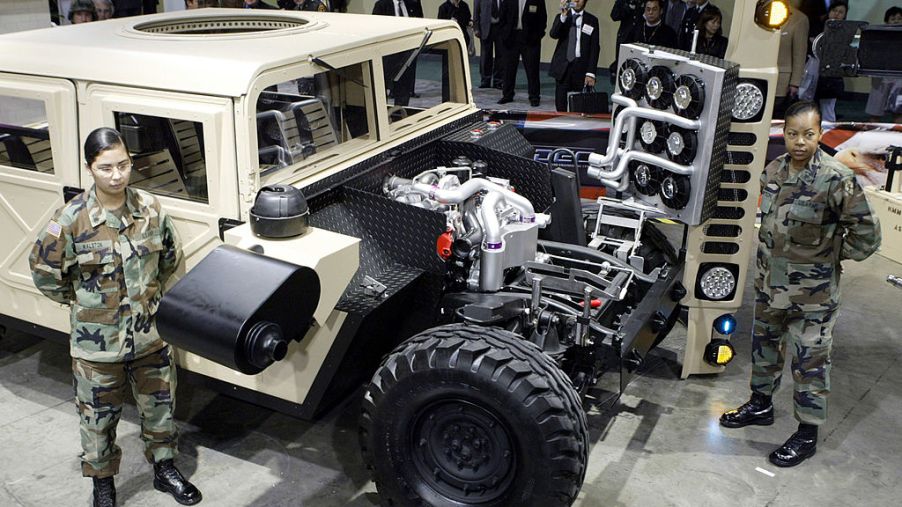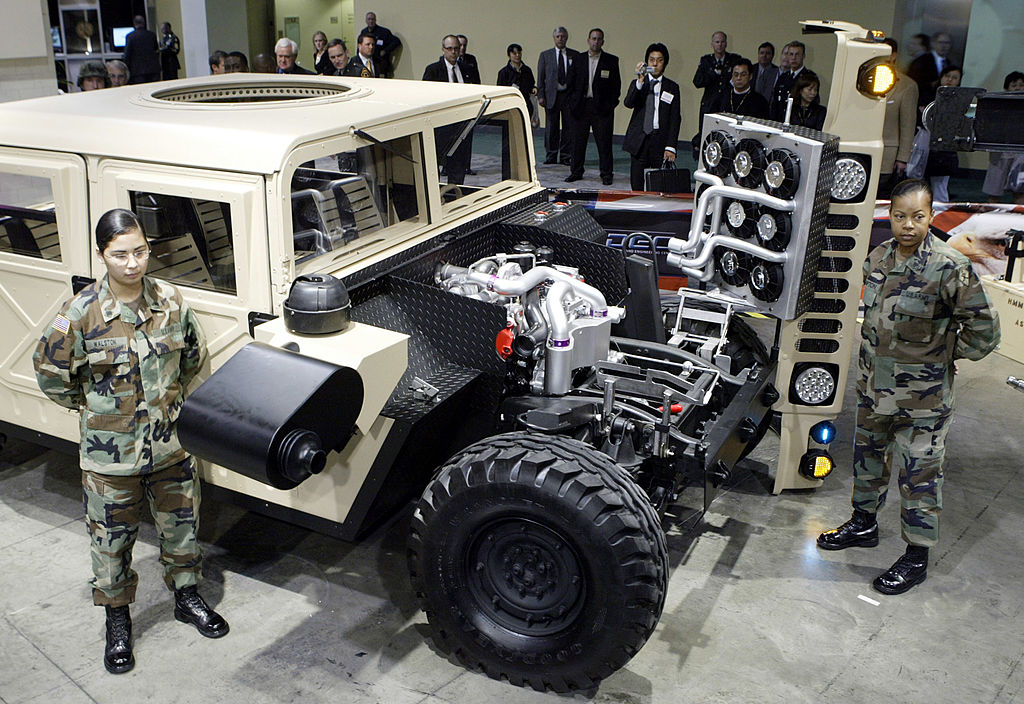
Inside the Branch of GM That Specifically Serves the U.S. Military
Countless companies around the country have played a role in the success of our military, and one role you may not know about is the role General Motors Company has had. GM has its hands in seemingly everything in the auto industry. And while that may be not-so-good news for its competitors, GM also plays a part in the U.S. military, which is good for everybody.
Known as GM Defense, this branch of General Motors was established to exclusively serve the U.S. military in a number of ways, including the creation of different military products. Curious about what this department has done over the years? Let’s take a look.

GM’s history in the military: WWI and WWII
GM’s contributions to the military began in 1914 during WWI, just six years after the company was founded. 90% of GM’s production was directed toward military aid and it produced over 8,500 trucks for the military.
Likewise, when WWII came around, GM was there again. It began by manufacturing guns and rifles while continuing its production of commercial and civilian vehicles until 1942, when it manufactured only military trucks, planes, engines, weapons, and ammunition for the remainder of the war.
Over 113,000 GM employees entered the military during this time, yet they produced over $12 billion worth of weapons. And keep in mind that was in 1945 dollars.
The Korean and Vietnam Wars
In the 1950s, GM again came to the aid of the military during the Korean War and the Vietnam War, and this is when it became known as GM Defense. The company manufactured J65 turbo jet engines, aircraft engines, over 8 million bazooka shells, and thousands of anti-aircraft guns. GM Defense was the largest manufacturer of the M-16 rifle during the Vietnam War, producing over 400,000 rifles for the military.
Post-war era
Into the 1970s and ’80s, GM Defense continued to produce military supplies alongside its line of civilian and commercial vehicles. The company created the Commercial Utility Cargo Vehicle (CUCV) and delivered over 70,000 of them to the military in the ’80s. In 1983, the military adapted hydrogen fuel cell technology through GM, producing its first fuel cell vehicle fleet.
After that, GM Defense became more secretive about what it was up to. We know that in 2016, they partnered with the U.S. Army Tank Automotive Research, Development, and Engineering Center (TARDEC) to develop the Chevrolet Colorado ZH2 fuel cell electric truck, capable of on-board water production, exportable electric power, and off-road capabilities.
In 2018, GM Defense produced a new framework for its next-generation heavy-duty military trucks, capable of carrying a heavier payload and faster refueling times.
In 2019, GM began testing a prototype of the new Infantry Squad Vehicle (ISV). ISVs are capable of carrying 12 people both on-road and off-road. They’re versatile and rough, able to handle most types of terrain and are expected to have a long life to them.
What is GM Defense up to now?
Besides testing the prototype ISV, we honestly don’t know much about what goes on in GM Defense. There has been some changing leadership within the branch and a spokesperson has stated that the branch revamping its business strategy for the coming decade.
While we’ll keep our fingers crossed that there won’t be a reason to need GM Defense to pull out all of the stops like it did in the first half of the 1900s, it will be interesting to see what work the comapny continues to do to aid the U.S. military. It’s always good to see companies take on additional roles outside of their comfort zone, and just look at where it has brought General Motors along the way.


